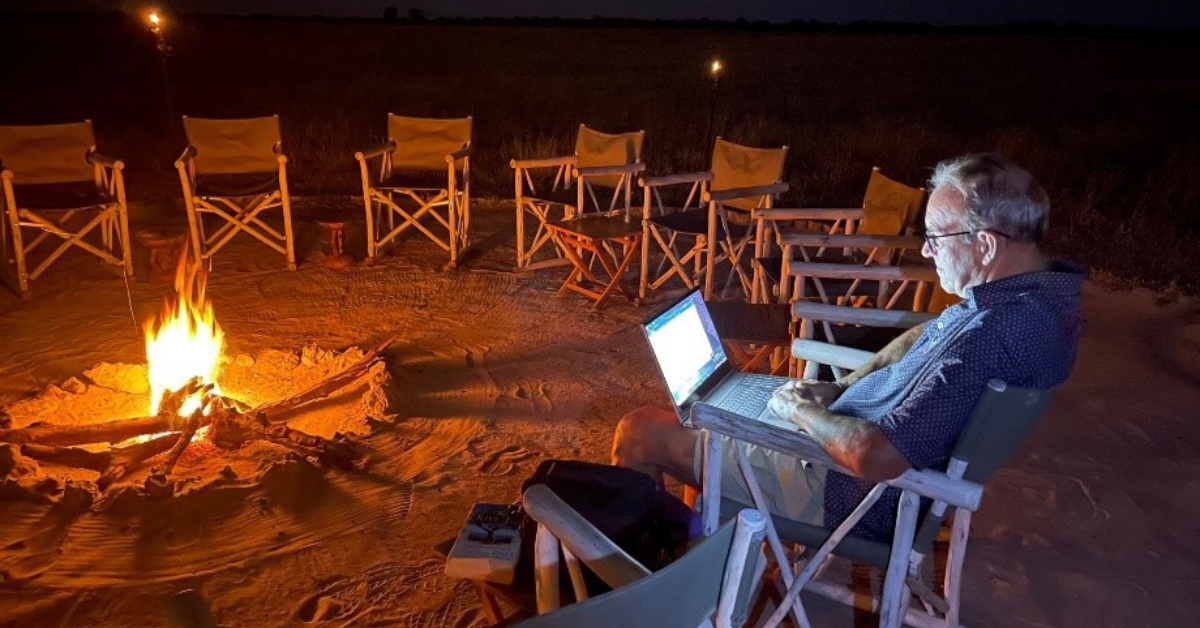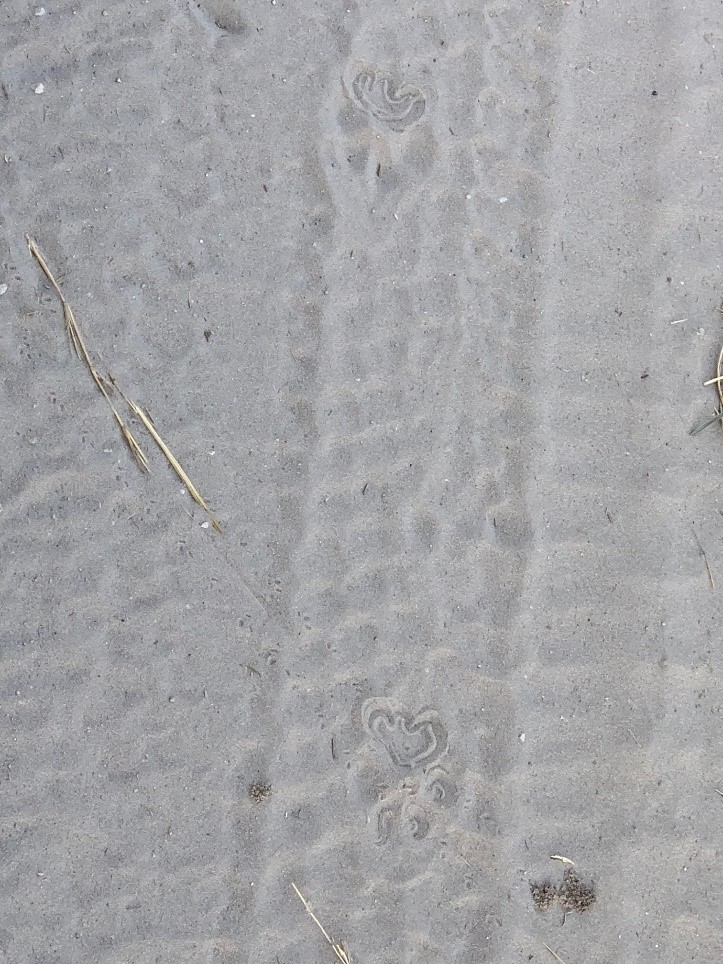
I’m writing this newsletter unsure if it will ever reach civilization.
That’s because right now I’m sitting around a campfire in the Botswanan bush, laptop in hand. Without access to Wi-Fi or 4G. Or any other connection to the outside world.
In fact, I’ve spent the last 10 days at four different camps in the bush, brought to each by a 4, 6, or 8 seat Cessna plane landing on dirt strips.
The reason I’m going through this “ordeal” is far less dramatic than the opening line implies, of course. But saying I’m in Botswana for a game spotting trip wouldn’t have the same pattern-breaking impact.
And I wanted to grab your attention from the outset because today’s seemingly bush-related article may help you understand the importance of pattern recognition and set you on a course for long-term success in the stock market.
Now I know that might sound ludicrous. But stick with me on this one and let’s see where it takes us.
Why Am I In The Botswanan Bush In The First Place… And Why Should You Care
I didn’t just wake up one day and think:
“You know what, I’m sick of looking at charts and market research data, let’s go on an African safari.”
You see, being born and bred in South Africa, I grew up spending a lot of my time in various game parks around the country. Indeed, I still have a field guide with handwritten notes dating back to the 1980s, recording my first spotting of various bird species. That was years before I ever started my love affair with the stock market.
And those who have spent any amount of time out in African wilderness will understand the pull it has on you. It’s something you always yearn to get back to.
So after many years away, my wife and I decided it was time to head back to the motherland and tick a few items off the bucket list.
Now you’re probably asking, what does any of this have to do with the stock market?
Well, after two or three days of animal and bird spotting with our experienced guides, I began to regain a bit of the ‘trained eye’ for pattern recognition that I had acquired years ago.
And the more time we spent tracking wild game, the more apparent the similarities between the bush and the stock market became to me.
You see, the bush and the stock market are eerily similar environments. And what it takes to succeed in the former is akin to what you need for success in the latter.
Let me explain:
What It Takes To Become A Successful Self-Directed Investor
At its core, animal and bird spotting in the bush comes down to pattern recognition. It’s about being able to recognise all the different shapes, sounds, sizes, movements, traits, patterns of flight, and colours.
So, with guidance, time, vigilance, attention to detail, and eagerness to learn — one can quickly acquire beginner skills needed to identify different species of birds, antelope, and spoor (footprints).
In fact, it would take you just a few consecutive days of repeated spotting to note the difference between a Turtle Dove, a Namaqua Dove, a Red-eyed Dove, and an Emerald-spotted Wood Dove while they’re in flight. And much less to accomplish the same feat while these birds are stationary.
Guides with years of experience can note these differences in seconds. And tell you all about the species’ size, eye colour, plumage and feather colour, etc., while you look through your binoculars amazed at the level of detail they’ve noticed and so elegantly described.
Spotting birds is just one of many pattern recognition examples I’ve seen in the bush. Termites, cheetah spoor, leopard droppings and spoor(in camp too!) are others that we experienced. I even took a few photos that show some of the leopard and cheetah tracks we encountered.

But why am I nattering on about spotting animals and birds instead of talking about how you can succeed in the stock market?
Well, because the road to becoming an experienced and reliable animal and bird spotting expert has a very similar path to the road to becoming a consistently profitable investor.
How so?
To start, you cannot become an expert in either field overnight. Pattern recognition is a skill that takes 1000s of hours of practice to master, regardless of the environment you’re in (this could be reduced with good mentorship).
For spotting guides specifically, it’s necessary to complete 3 levels of formal training interspersed with around 3 years of on-the-job training alongside senior guides.
Only then can you call yourself a “Guide.”
This training generally takes 1,200 to 1,500 game drives. Each lasting 4 hours on average. In other words, you need to spend approximately 4,800 to 6,000 hours in the bush to acquire a ‘trained eye’.
And even then the training doesn’t end.
Take one of our guides, for example…
With over 10 years of formal training and experience (20,000+ hours of pattern recognition in the bush), the variety of patterns and uniqueness of our natural world still forced him to consult his field guides from time to time to confirm or deny his initial species call.
Are you starting to connect the dots as to how this relates to the stock market?
If not, consider this:
Without spending tons of hours researching and studying price movement, over years of historical data, you’ll never build the pattern recognition abilities that allow you to easily identify opportunities and trends.
And without this ability you can’t build a Statistical Edge (‘trained eye’) that puts the probability of success on your side.
And even with a Statistical Edge, you can (and will) still have losing trades (mis-identified bird species) from time to time.
But animal spotting guides don’t let a wrong species call affect them in the same way that a loss trade affects the majority of stock market investors.
Why? Because they have faith in the field guides and know they will lead them to the right species in the end.
As will a stress-tested and verified system lead you to a long-term overall win despite many short-term losses.
Internalizing and accepting this fact ensures you stay on course no matter how many “wrong calls” you make. And allows you to navigate the uncertainty of the markets with calm and clarity, and enjoy all that makes it tick.
The similarities between the bush and the stock market don’t end here either…
The Cycle Paradox You Must Understand In Order To Outperform The Market In The Long Run
Spend a few days in a particular area of the bush, and you’ll start to notice its long-term, time-grown cycles.
For example, there’s a zebra migration through the Makgadikgadi Pans every year.
Wildebeest migrations occur every year in central Africa.
Elephants trek vast distances in different directions depending on the season and water locations. Similar examples abound.
These are annual cycles that have repeated for millennia, perhaps longer. And if you observe them at surface level, they always look the same to an untrained eye.
Yet each migration is different and unique.
Animal movement and survival rates vary in periods of feast and famine, which repeat in longer time cycles. Much like the long term secular bull and bear market cycles we experience in the stock market.
‘Black swan’ events occur with overly-large floods and long periods of drought. Indeed, records have been found of 30+ year droughts that have occurred in the Nile River flood plains that have caused immense changes in human and animal migration.
In the bush you learn of the daily, weekly and annual trends of animals’ (price) movement as the heat (sentiment) of the (trading) day changes to where the water (up-trend) is, and which way the wind is blowing and what smells prevail.
All unique, ever-changing variables combining to create unique daily, weekly, monthly, quarterly, annual and decade patterns.
Animals are constantly adapting and overcoming new challenges in their slowly, yet continuously changing environments.
This environment change happens so slowly, as does the animal adaptation, that from one decade to the next it is hardly noticeable to those living in the midst of these cycles and change.
Patterns, cycles and trends exist in all timeframes everywhere on our wonderful planet. The environment of the stock market is hardly any different.
Its only main difference is that it is an environment led by the psychology of human crowds, the intelligent reasoning species on the planet. Rather than by the instinct of animals reacting to the natural trends and cycles of mother earth.
But many psychology text-books state that human brains are still operating out of a ‘cave-man’ fight or flight mindset from thousands of years ago. Even in this fast-faced modern world in which fads and crazes come and go in a flash.
Meaning, our deep-rooted psychology has not and does not change as quickly as one might think. And it is this same human psychology that drives the movements of the markets.
Why is this important?
Well, it means we can trust that the patterns, cycles and trends that have already occurred in the market, as unique as each is, will repeat in as similar a fashion, to be able to profit from them, now and for many decades, perhaps centuries, to come.
And through all these repeating natural patterns, cycles and trends that are happening, nothing is more evident than the effect of ‘timing’ with everything in the bush.
Animals’ lives depend on it day in and day out. Both for predator and prey.
A few seconds between a sharp turn here or there is the difference between life and death for the antelope. Feast or hunger for the predator.
Water coming a week or two too late is the difference between life and death for a bloat of hippos as their pan dries up.
Same goes for the stock market, where timing is everything too.
Be just a bit late with your sell or buy trade, and your profits may disappear into thin air.
Hesitate with getting back into the game after a bear market period — and you won’t ride the rising trend.
Bush Lesson Summary — It’s Never Too Late To Start Outperforming The Market
It was an amazing 12 days spent in the bush. I realized I live and breathe investing wherever I am and see it in everything.
But the above observations aren’t a result of my obsession. Think about everything I’ve said for a second and put aside the fact this article is a bit unorthodox and filled with digressions (I did write it on day 10 of a 12-day hiatus from civilization).
Do you see how pattern recognition is so important in both the bush and the stock market, and how natural trends and cycles exist and repeat in each?
And how the inhabitants of both must learn how to read, understand, and empathise with the environment in which they live. Because if they don’t become in tune with it — they won’t survive, let alone thrive.
The silver lining is that with investing it’s only money on the line. Life always goes on. Meaning you get another chance to learn to listen, read, and interpret the patterns that repeat in the stock market.
Take that chance NOW if you are serious about ensuring a financially safe & comfortable 25-30 year retirement, and start learning how to become in tune with the market, instead of fighting against it. Every journey begins with the first step.
You can start with this article. And don’t worry, I didn’t write that one in the bush.


